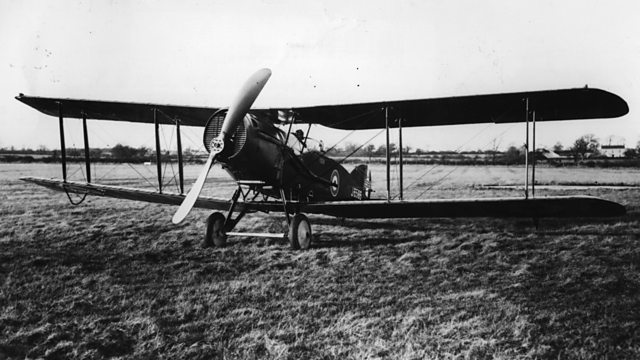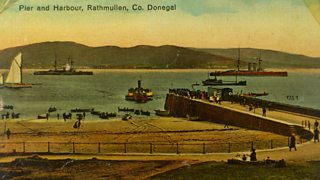Comber, Co Down: The War Was Won On Ulster Wings
During WW1 Andrews' Mill in Comber made linen yarn to cover fighter planes.
Today Andrews' Mill in Comber is a complex of quiet residential apartments, but during World War One its focus was on military aircraft and aerial combat.
By 1916 all the linen yarn from the mill went to fulfil government orders. Most of it was used to make the fabric that covered fighter planes.
As a whole, Irish linen producers received around Β£11m of government orders during the war years.
When flax from overseas became scarce, the government offered incentives to local farmers, urging them to grow flax again. The scheme succeeded and the area under flax cultivation in Ireland trebled.
The linen used for aeroplane fabric needed to be of the finest quality. It covered a wooden structure, and was then brushed with a chemical solution to shrink the fabric. This process gave the wings more rigidity.
Thousands of planes were built during the war, many of them in Belfast. Some had a wing span of more than 100 feet and could deliver bombs as far away as Berlin.
The Irish Linen Centre in Lisburn, just a few miles from Andrews' Mill, has a piece of linen that was part of the wing of a Bristol F2B fighter. The silver-painted fabric covered the aileron, the flap that is moved to make the plane bank and turn.
The role Irish linen played in the construction of fighter planes was widely recognised, so much so that Field Marshal Lord French stated, "The war was won on Ulster wings".
Location: Andrews' Mill, Comber, BT23 5WS
Image of a Bristol fighter plane, circa 1916
Duration:
This clip is from
Featured in...
![]()
Βι¶ΉΤΌΕΔ Radio Ulster—World War One At Βι¶ΉΤΌΕΔ
Places in the UK and Ireland that tell a story of World War One
![]()
War in the Air—World War One At Βι¶ΉΤΌΕΔ
Zeppelin raids and aviation heroics
More clips from World War One At Βι¶ΉΤΌΕΔ
-
![]()
The loss of HMY Iolaire
Duration: 18:52
-
![]()
Scotland, Slamannan and the Argylls
Duration: 07:55
-
![]()
Scotland Museum of Edinburgh mourning dress
Duration: 06:17
-
![]()
Scotland Montrose 'GI Brides'
Duration: 06:41








